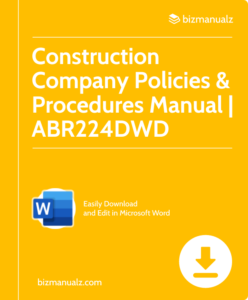How to Account for Self-constructed Assets

Accounting for self-constructed assets can be a complex task. Evaluating costs, selecting the right valuation method and following accounting standards and regulations are all part of the process. How to account for self-constructed assets.
Self-Constructed Assets
When creating an asset, such as a building or equipment, companies must consider direct materials, direct labor and overhead costs. Allocating these costs correctly is key to valuing the asset.
One way to do this is to record the actual costs incurred during construction. This ensures that the asset’s worth reflects the true cost of its creation. It also improves transparency and reliability in financial reporting.
Alternatively, capitalizing interest on borrowed funds may be used. The total cost of the project is accurately reflected by including interest costs. However, complying with accounting guidelines is necessary to determine eligible interest amounts.
Regulatory requirements need to be understood too. Companies must follow accounting standards such as GAAP or IFRS. This ensures financial statements are consistent and comparable.
Understanding Self-Constructed Assets
Self-constructed assets refer to those built and developed internally by a company. They can include anything from buildings to software or intellectual property. Knowing how to report these assets is vital for exact financial reporting and decision-making.
To understand the subject more, let us divide it into its key components. In the table below, we’ll look at the elements of accounting for self-constructed assets:
| Element | Explanation |
|---|---|
| Capitalization | Determine whether costs should be capitalized or expensed. |
| Direct Costs | Figure out direct costs directly connected to asset building. |
| Indirect Costs | Allocate expenses related to asset construction. |
| Interest Capitalization | Decide if interest on financing for the construction should be capitalized. |
| Asset Valuation | Decide the fair value or cost of the finished asset. |
Now, let’s go into more details. Note that to capitalize self-constructed assets, they must meet certain criteria set by accounting standards, like reliable measurement of costs and future economic benefits.
When figuring out direct costs, companies must include materials and labor that are directed related to constructing the asset. On the contrary, indirect costs involve allocating overhead expenditures during the construction.
Interest capitalization is necessary when external financing is used for asset building. Companies may decide to capitalize interest costs directly connected to them. Finally, properly valuing self-constructed assets is essential for financial statements. The valuation can be based on cost or fair value.
Pro Tip: To guarantee transparent auditing and compliance with accounting standards, proper documentation and recordkeeping during the construction phase are essential for accounting self-constructed assets.
Importance of Accounting for Self-Constructed Assets
When accounting for self-constructed assets, cost allocation is a must. Allocating expenses for materials and labor helps determine the asset’s total cost. Plus, it’s important to meet accounting standards such as GAAP or IFRS to avoid issues.
Having accurate records of self-constructed assets also provides transparency to stakeholders. This helps them make smart decisions about their involvement with the company. To aid in the process, businesses should create clear procedures and use specialized software. Regular internal audits are also recommended to identify discrepancies.
Steps to Account for Self-Constructed Assets
Accounting for self-constructed assets is an essential part of financial management. Here’s a step-by-step guide:
- Recognition: Determine if the asset meets the criteria for recognition as per accounting standards. Check if it meets the definition of an asset and fulfills the criteria for control, future economic benefits, and reliability of measurement.
- Measurement: Once recognized, measure the self-constructed asset accurately. Estimate the direct costs incurred in constructing it like material, labor, and other necessary expenses.
- Capitalization: Capitalize all costs that meet the recognition criteria and ignore any that don’t. This includes direct expenses and interest costs incurred during the construction phase if applicable.
- Depreciation: Apply depreciation on the capitalized cost over its useful life according to appropriate accounting policies and guidelines. Monitor impairment indicators and conduct impairment tests as needed.
- Disclosures: Give adequate disclosures in financial statements about the nature and amount of self-constructed assets. Include details about their useful lives, depreciation policies used, methods for measurement, and any significant events or uncertainties affecting their valuation.
Apart from these steps, remember to keep proper documentation for all calculations and assessments related to accounting for self-constructed assets.
Nowadays, businesses have access to advanced software and tools that simplify this process. These digital solutions provide accurate tracking of costs, automate calculations, ensure compliance with accounting standards, and offer comprehensive reporting capabilities.
Understanding how to account for self-constructed assets is key to presenting reliable financial statements that accurately reflect an organization’s financial position.
Examples of Accounting for Self-Constructed Assets
Accounting for self-constructed assets involves several examples. These include capitalizing direct costs, allocating indirect costs and determining useful life. A table is provided below to illustrate this:
| Example | Description |
|---|---|
| Capitalization | Adding direct costs to the asset’s cost. |
| Allocation of Costs | Allocating costs using a systematic method. |
| Determination of Life | Estimating life based on factors such as obsolescence and wear and tear. |
It is important to take unique details into account. This includes documenting costs and record-keeping. Following GAAP or IFRS is key for jurisdictions and reporting requirements. Source: Accounting Standards Board.
Challenges and Considerations
When it comes to accounting for self-constructed assets, there are several challenges and considerations to keep in mind. These include choosing the right valuation method, allocating costs correctly, and making sure you’re compliant with accounting standards. It’s important to address these factors to ensure accurate financial reporting.
Let’s look at the primary challenges and considerations:
| Challenge/Consideration | Description |
|---|---|
| Valuation Method | Choosing the suitable approach for valuing self-constructed assets can impact their recorded value. |
| Cost Allocation | Properly allocating costs incurred during the construction process ensures accurate financial reporting. |
| Compliance with Accounting Standards | Adhering to relevant accounting standards ensures transparency and comparability of financial statements. |
Apart from these, there are other factors to take into account. These include estimating fair value, documenting all costs, and determining appropriate depreciation rates in line with asset classifications.
To tackle these challenges, try these tips:
- Engage Professional Appraisers: Get help from qualified appraisers to determine fair value accurately. Their expertise will ensure an unbiased assessment based on market conditions and comparable assets.
- Maintain Detailed Records: Document all costs related to the construction process thoroughly. This includes direct material and labor expenses, as well as indirect costs like utilities and supervision fees. Keeping detailed records facilitates accurate cost allocation.
- Regularly Review Accounting Standards: Stay up-to-date with relevant accounting standards pertaining to self-constructed assets. Regular reviews will help ensure compliance and enhance the reliability of financial reporting.
By following these suggestions, businesses can overcome the difficulties of self-constructed asset accounting while keeping accurate financial records that comply with accounting standards.
Accounting for Self-constructed Assets
When accounting for self-constructed assets, it’s crucial to take careful consideration and follow specific guidelines. Costs should be recorded at their actual amount, including direct materials, labor, and overhead.
All expenses during asset construction should be allocated correctly. Borrowing costs that directly relate to the asset must also be added to its cost. Regularly review and evaluate the carrying value of self-constructed assets is necessary to assess impairment and adjust for any changes in their expected useful life or salvage value.
For example, a company was constructing its office building. It involved significant costs associated with materials, labor, and other related expenses. By accounting each expenditure and applying the correct allocation methods, the company was able to accurately report the cost and make their financial statements transparent.
Frequently Asked Questions

Q: What are self-constructed assets?
A: Self-constructed assets are assets that a business creates or constructs on its own, rather than purchasing them from an external source.
Q: How do you account for self-constructed assets?
A: To account for self-constructed assets, you need to determine the cost of construction, allocate overhead costs, and capitalize those costs as part of the asset’s value on the balance sheet.
Q: How do you determine the cost of self-constructed assets?
A: The cost of self-constructed assets includes direct materials, direct labor, and a portion of the overhead costs directly associated with the asset’s construction.
Q: Can you include general overhead costs in the cost of self-constructed assets?
A: No, general overhead costs cannot be included in the cost of self-constructed assets. Only the portion of overhead costs directly related to the asset’s construction can be capitalized.
Q: How do you allocate overhead costs to self-constructed assets?
A: Overhead costs can be allocated based on a predetermined formula or allocation rate, such as a percentage of direct labor or direct material costs.
Q: What is the treatment of interest costs during the construction period of self-constructed assets?
A: Interest costs incurred during the construction period of self-constructed assets may need to be capitalized as part of the asset’s cost if they meet certain qualifying criteria.

















Leave a Reply